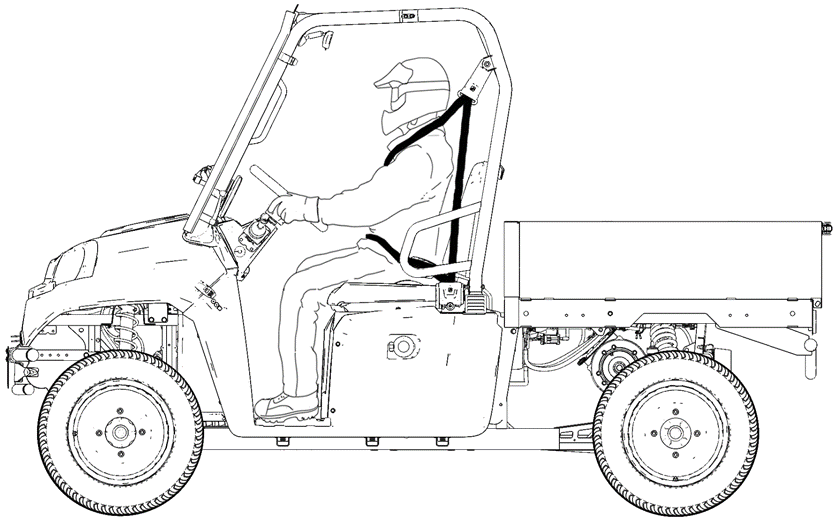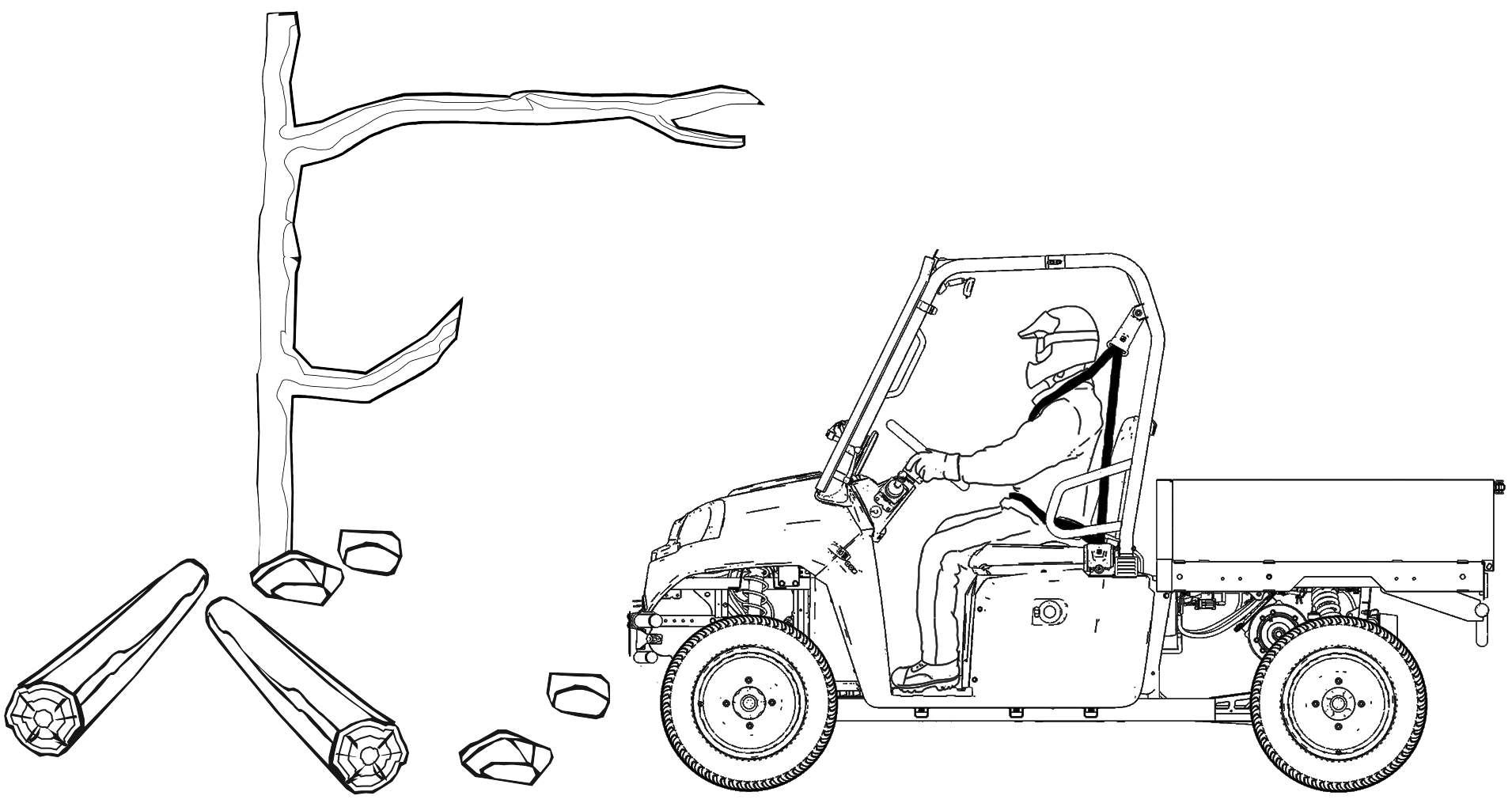 WARNING WARNING |
| Skidding or sliding can cause loss of control or rollover (if tires regain traction unexpectedly). When operating on slippery
surfaces such as ice or loose gravel, reduce speed and use extra caution to reduce the chance of skidding or sliding out of
control. Do not operate on excessively slippery surfaces. |
When driving on slippery surfaces such as wet trails, loose gravel, or ice, be alert for the possibility of skidding and sliding.
Follow these precautions when encountering slippery conditions:
- Do not operate on excessively rough, slippery or loose terrain.
- Slow down before entering slippery areas.
- Maintain a high level of alertness, reading the trail and avoiding quick, sharp turns, which can cause skids.
- Correct a skid by turning the steering wheel in the direction of the skid. Never apply the brakes during a skid.



